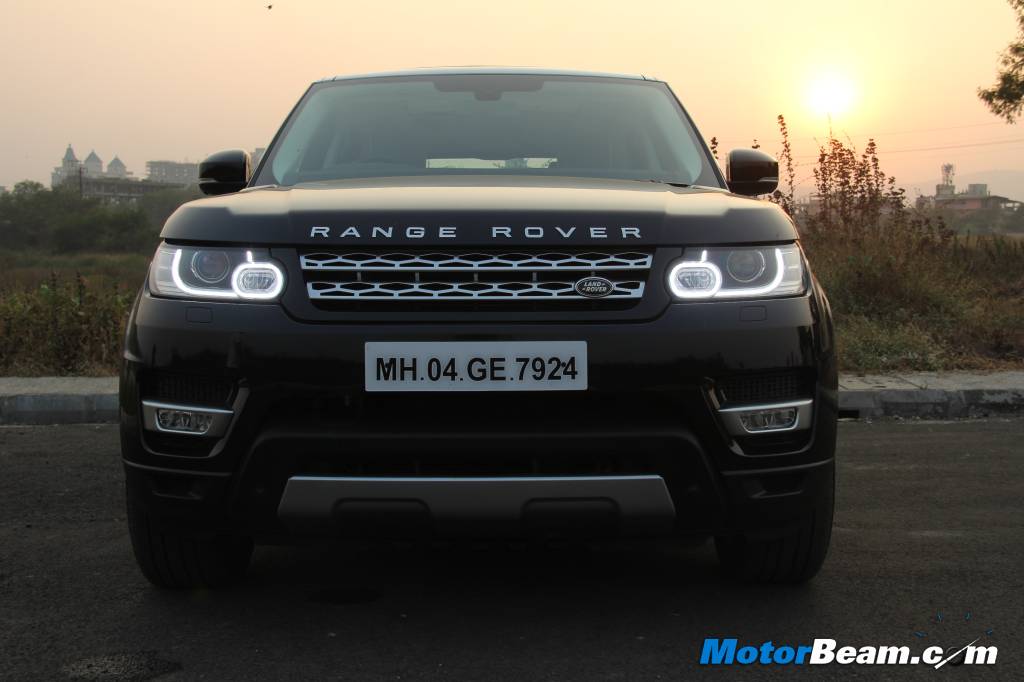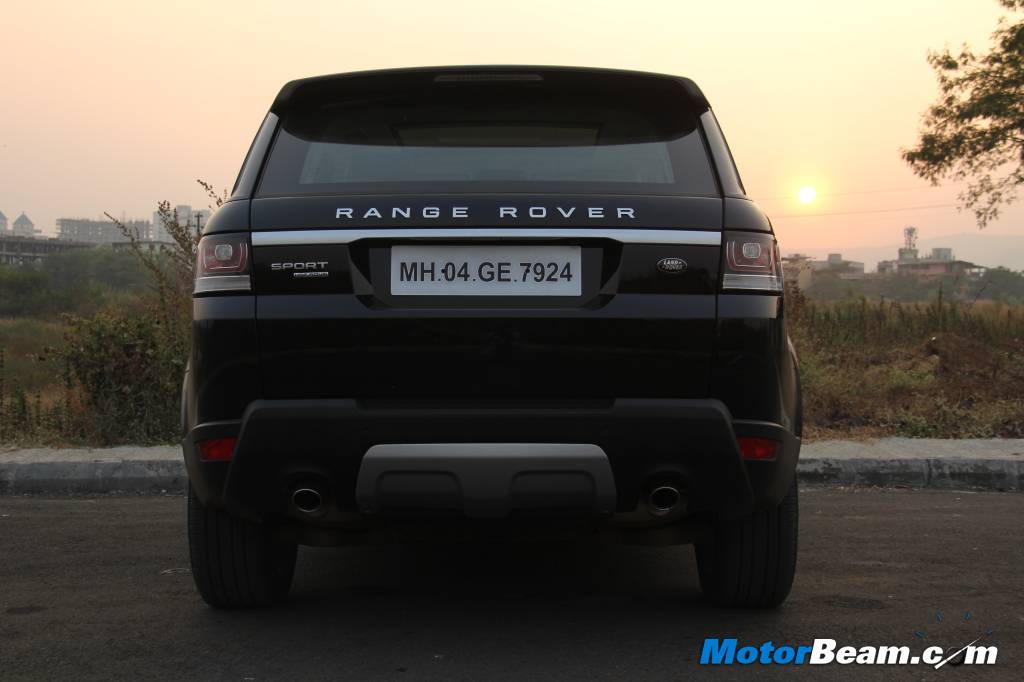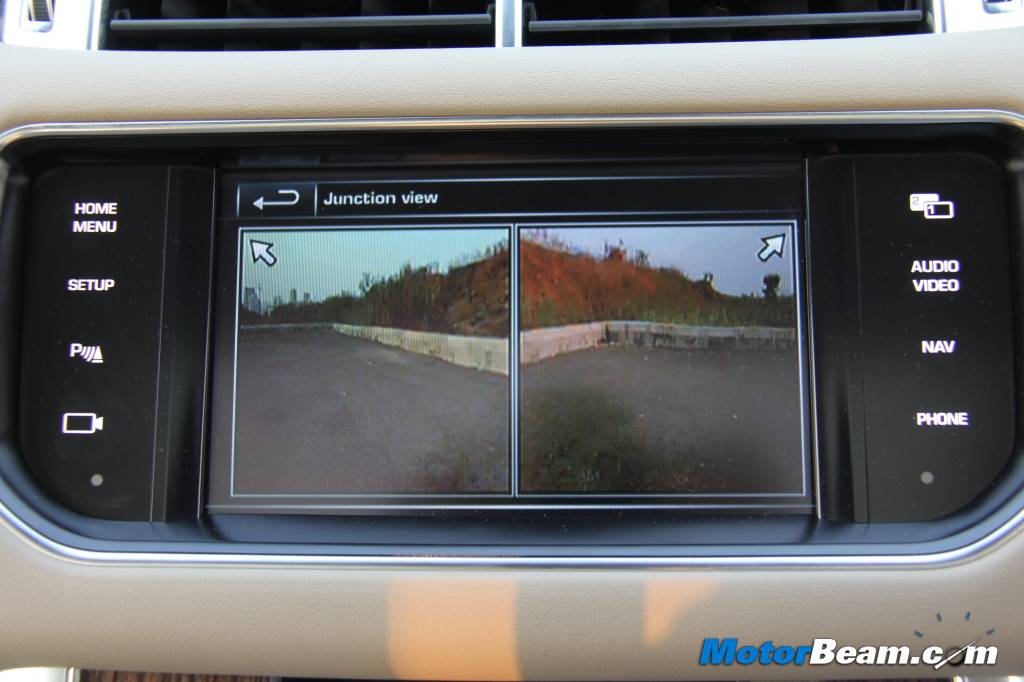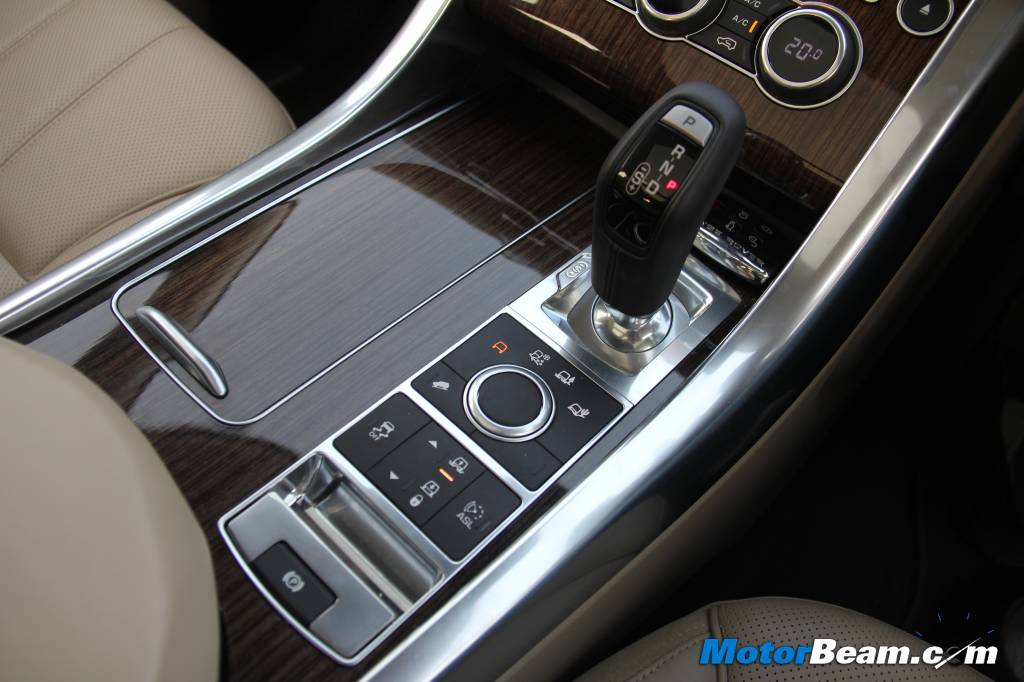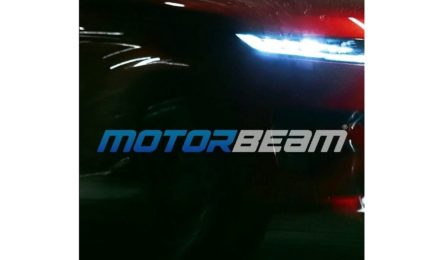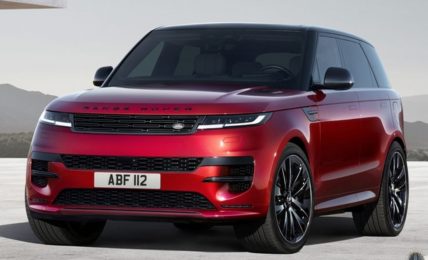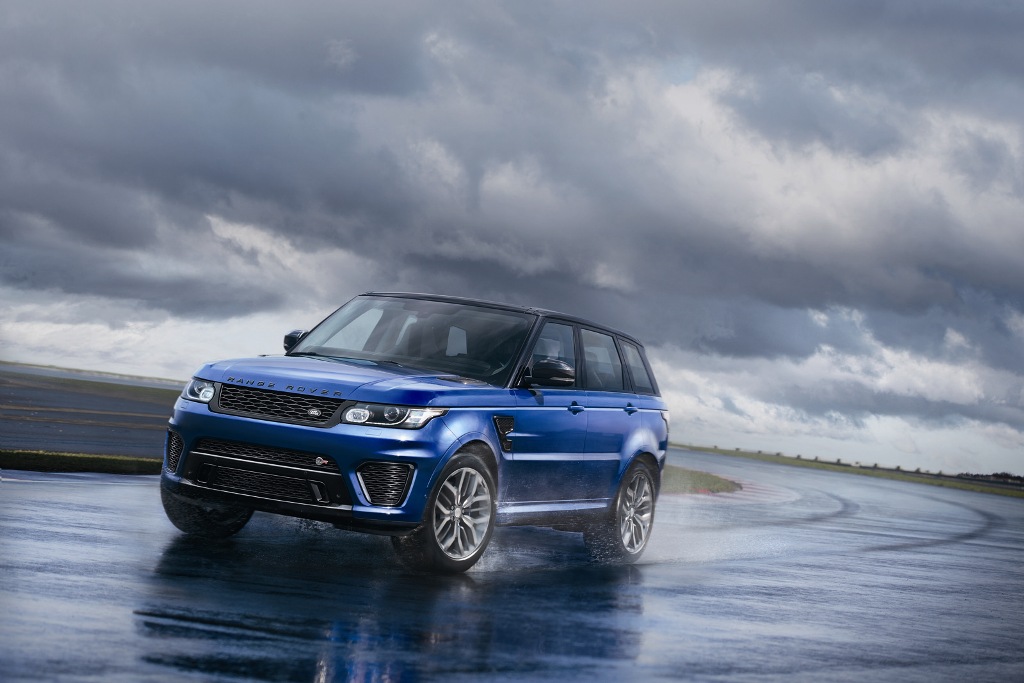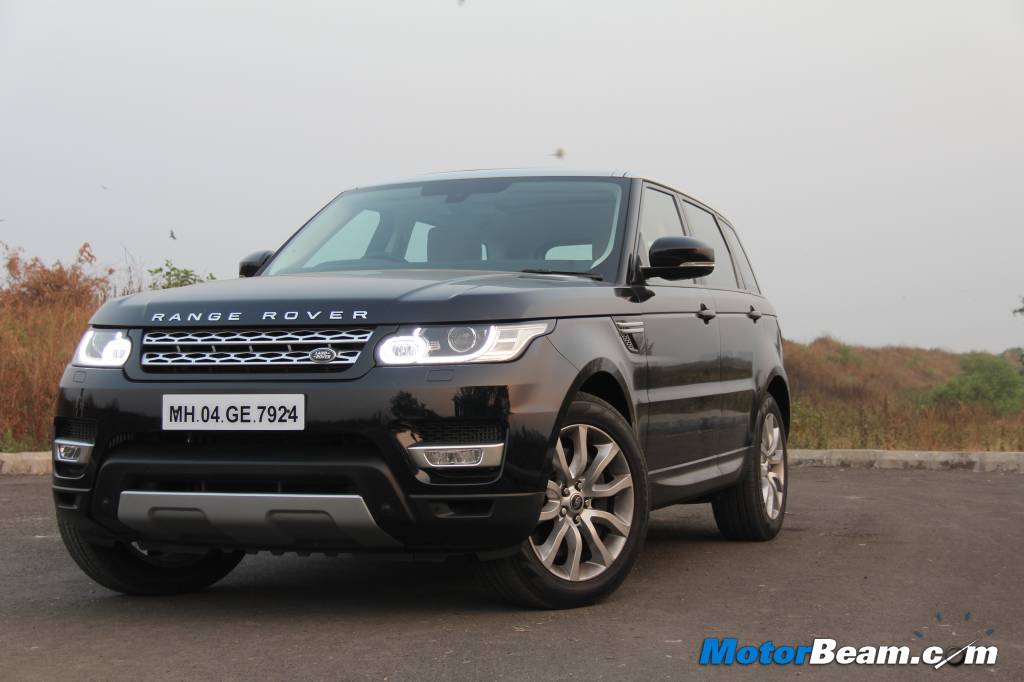
Range Rover Sport Review
Car Tested: 2014 Range Rover Sport HSE SDV6
Price OTR Mumbai: Rs. 1,85,15,060/-
The Range Rover Sport offers dynamic performance without comprising on opulence.
Imagine a premium car which costs as much or more than the flagship offerings from the German trio yet commands a waiting period of more than nine months in a mature market like Europe, where choices are galore. Meanwhile, people in China are ready to shell out an extra Rs. 50 lakhs in spite of this particular vehicle already commanding a premium, Rs. 2.90 crores to be precise. By now you must have guessed the vehicle we are talking about and the above things are testimony to the success of the all new Range Rover Sport. In fact we have already had two outings with the car, one on a track in the UK and the other on an off-road course in balmy Lonavala. This time around, we drive the second generation Range Rover Sport on public roads putting it through the thick and thins to see why this Land Rover has such a massive fan following.
Motor Quest: The Range Stormer concept was showcased in 2004, turning into the Range Rover Sport in 2005. The second gen model was launched earlier this year and is a thorough evolution of the original.
Exteriors – The new Range Rover Sport has evolved and gone from appealing to drop dead gorgeous. While retaining the classy boxy design elements of the old model, the new Sport draws heavy inspiration from its other Range Rover siblings, the standard Range Rover and the Evoque. The result is a sporty looking SUV with high attention to detail like the puddle lamps on the rear view mirrors which project ‘Range Rover’ on the road, the headlights which resemble a high performance camera lens (light throw is fantastic, illuminating the complete road in the darkest of circumstances), the air vents which are neatly placed on either side of the hood, the high belt line which evokes muscularity and the lights which flow onto the sides of the car.
The Range Rover Sport has a very sporty stance, the HSE variant gets 20-inch wheels
View the new Range Rover Sport from the side and you will immediately notice it’s more compact than its elder sibling. After all, the Sport isn’t much bigger than its predecessor when it comes to exterior dimensions and is 149 mm shorter than the standard Rangie. This SUV features well sculpted corners and a sloping roof (with the choice of 3 contrast colours) amplifying the sporty credentials of the vehicle. Undoubtedly the car looks very streamlined and is an instant attraction on our roads, just everyone skips a beat when they see this beauty in motion. The clamshell bonnet and side fender vents are signature Range Rover cues while the short overhangs and wide 20-inch tyres give the car a very dynamic stance (up to 22-inch wheels available as option).
The materials used inside the car are of very high quality and the cabin feels special
Interiors – An area which Land Rover has mastered over the years is the interiors. Step inside (you don’t have to climb in as the access height feature reduces the height by 50 mm for easy ingress) and you are greeted by a truly special cabin. The level of detail seen on the exteriors is nothing compared to what can be seen on the interiors (open the door and you can see the Sport’s sketch on the B-pillar). The dashboard is similar to the standard Range Rover which in-turn has taken a few styling cues from the Evoque. Quality of materials is excellent and build quality is simply exceptional with nothing to fault. Our test car came with beige interiors but given the sporty pretext of the vehicle, red or black colours will be more fitting to the cocooning interiors of the Range Rover Sport. Land Rover does offer personalisation options and you can choose from 11 interior colour themes, 4 aluminium interiors finishes, 3 real wood veneers, 3 headliner colours, 9 alloy wheel designs to make your Range Rover Sport bespoke.
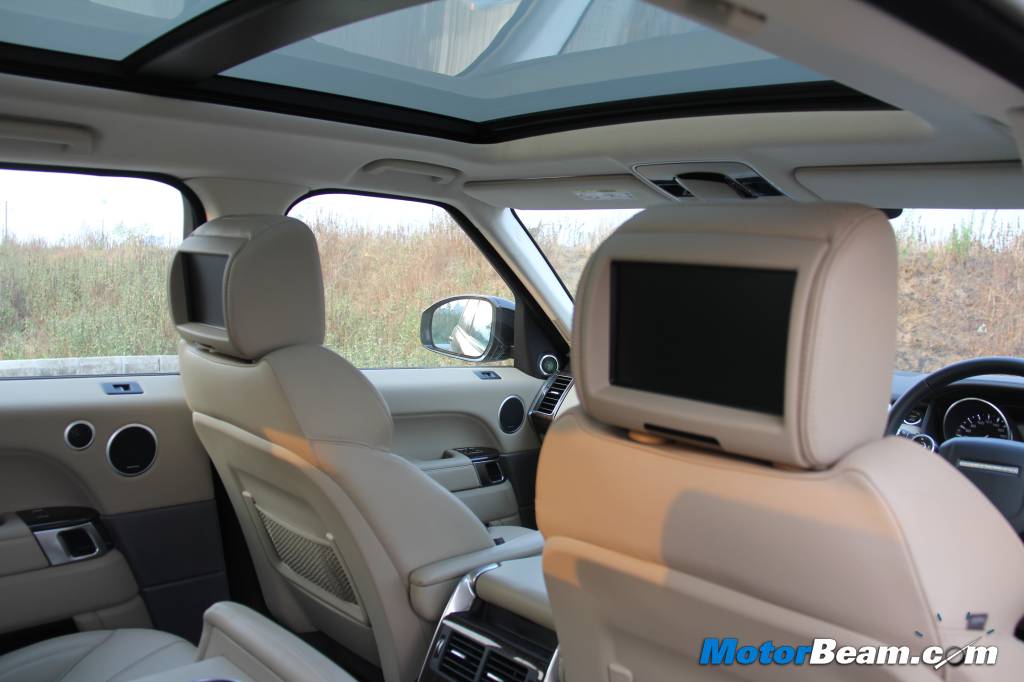
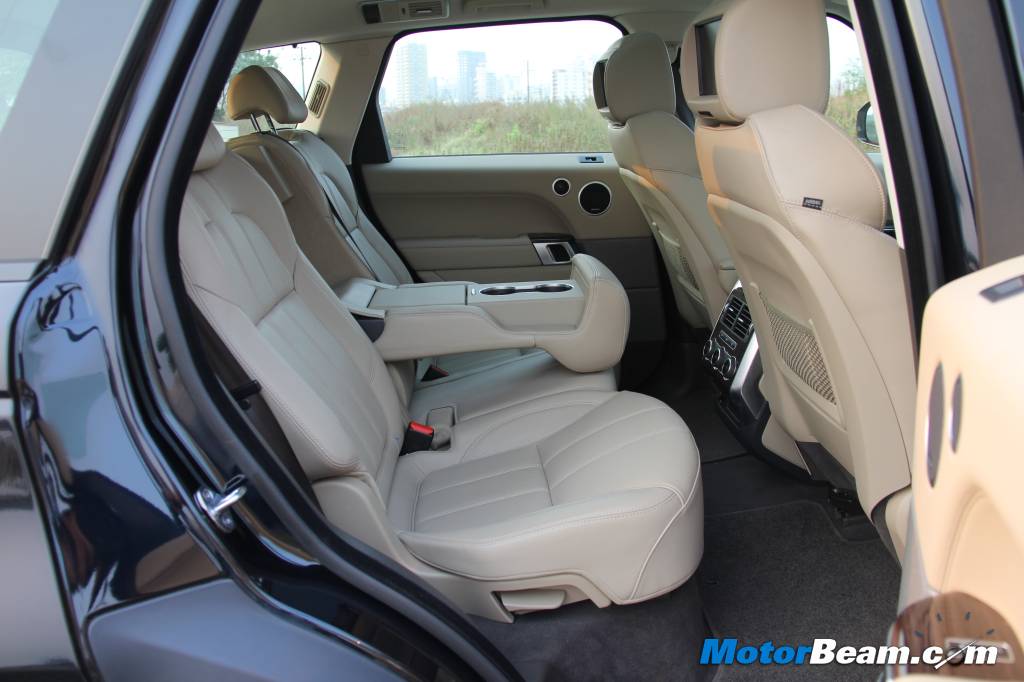
Interior is very airy thanks to large panoramic roof, all seats are super comfortable with good room
The use of contrasting colours in the cabin is very tastefully done, there are wood and chrome inserts all around like on the centre console, side AC vents and the door handles. The dashboard uses soft touch materials and the buttons are also soft touch like the glove box switch and the cabin lights which are touch sensitive, not to forget the feather touch door close (a vacuum pulls the door shut saving you the effort). Heavy emphasis has been given to the stitching on the leather with the twin-needle stitching resulting in an immaculate finish. The seats are itself very comfortable offering terrific bolstering and basking you in an environment of luxury which no other SUV offers. There is ample amount of room all around although the rear bench isn’t as spacious as the standard Range Rover. The Sport sees an increase in wheelbase of 178 mm which is a considerable improvement.
The Range Rover Sport comes loaded with features you would expect from a car of this price and many come from the flagship Range Rover. Equipment like cornering lights, xenon lights with power wash, multitude of cameras for all-round visibility (kerb view, junction view and the likes), three-zone climate control (the rear gets 6 AC vents – 2 between the front seats, 1 each above the rear window and C-pillar on either side), two 8-inch LCD screens for rear passengers, dual-view screens, mood lighting, etc (there are many more features which are present on the Autobiography trim and not on the HSE variant while some of them are optional, these include water level monitoring and traffic sign detection done by ultrasonic sensors, adaptive cruise control with queue assist and intelligent emergency braking, heated steering wheel, 19-speaker 825W Meridian audio system, automatic high beam assist, blind-spot monitoring with close vehicle sensing and so on and so forth, phew!).
The infotainment system also shows you TV which isn’t visible from the driver’s angle
However our favourite feature was in the infotainment system which gets lots of connectivity options, navigation and also a TV function. You can watch TV on the go and the reception is decent although there aren’t too many channels. The best part about this ‘on the move’ television is that it showcases the menu from the driver’s point of view while others can see TV, thereby saving the distraction of watching news while driving. The infotainment system isn’t intuitive to use as the touch-screen isn’t very slick and turning off the TV isn’t a one touch operation. Audio quality is excellent though and the 8-speaker 380W system offers pleasing aural bass. You can control the system using voice commands as well.
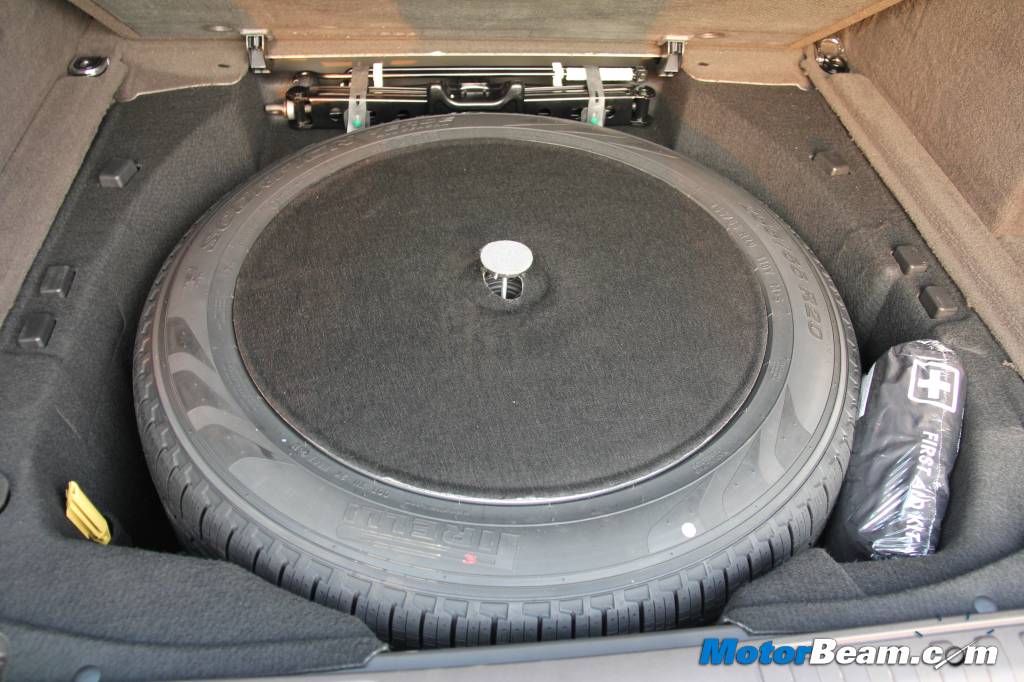
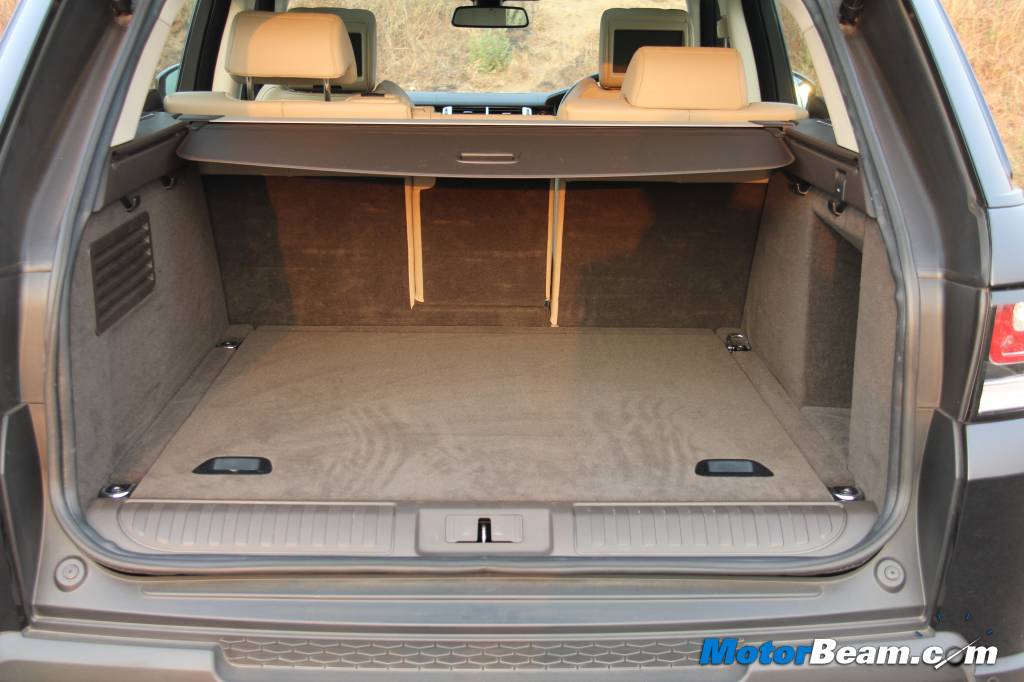
Full sized spare wheel is unique in this segment, boot is massive and 2 jump seats are part of secret seating option
All the controls inside are well laid out and in easy reach of the driver. The steering is slightly different than that found on the other Range Rovers and carries the buttons for the Bluetooth telephony and cruise control. The buttons on the stalk operate the multi-information display which has plenty of options including minute things to alter driving features and vehicle set-up. The instrument cluster is an analogue unit but the car can be specified with an LCD screen for the cluster like in the Range Rover. The cabin itself is quite airy thanks to the large windows and the huge panoramic roof. There are plenty of storage spaces inside the cabin, right from the door pockets to the centre console and the rear seat arm rest which also gets cup holders. The boot is huge and gets a powered tailgate. There is a charging point in the boot and secret seating can be opted for to make the Range Rover Sport a 7-seater. What is truly worth a mention is the spare wheel, which is full sized in spite of the tyre size being a massive 255/55/20! No other car in the segment comes with a full sized spare wheel.
3.0-litre diesel engine offers outstanding performance, packing in a lot of punch
Performance – There are three engines on offer on the new Range Rover Sport but in India we get only two. The petrol unit needs no introduction, it is the fire breathing 5.0-litre V8 supercharged motor which outputs a mammoth 510 HP of power and 625 Nm of torque, sprinting from 0-100 km/hr in a mere 5.3 seconds. We have driven the petrol powered Range Rover Sport on full steam and boy does it move with utmost urgency, putting a wide grin on your face with the exhaust offering an exciting note on full pelt. Out of the two diesels offered globally, we get the more powerful SDV6 unit which outputs an impressive 292 HP of power and 600 Nm of torque from its 3.0-litre V6 heart.
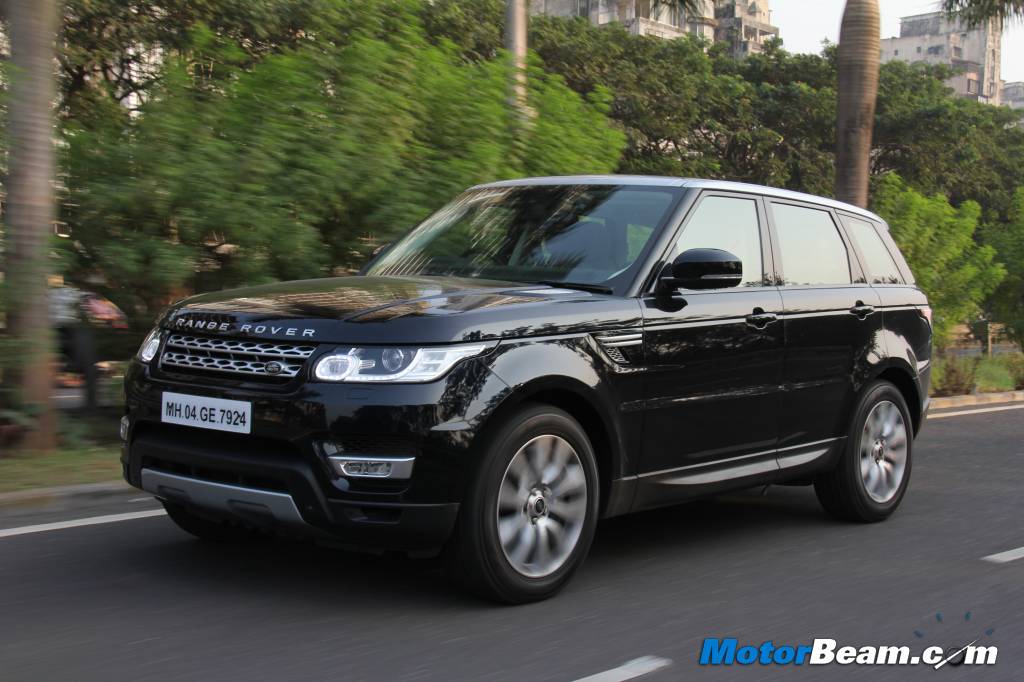
This diesel engine gives the Range Rover Sport tremendous on road performance. There is ample amount of low end poke once the turbo spools past the minor lag. Outright acceleration is impressive, the Sport pulling to 100 km/hr in a mere 7.4 seconds as per our VBOX readings. The vehicle continues to move strongly to its top speed without any hint of bogging down. In spite of the weight reduction, the Range Rover Sport is still a heavy car but the powerplant has plenty to offer and the 8-speed automatic gearbox is so well calibrated that performance is effortless, a simple tap on the big pedal is enough to execute a quick overtake. NVH levels, as you would expect are fantastic, the cabin is very well insulated and you are disconnected from the noises of the outside world.
The V6 diesel motor has strong mid-range and the 8-speed ZF unit is a total gem
The ZF transmission is quick to react with its crisp shifts yet let’s you control things. There is the steering mounted paddle shifts and a physical gear lever (no rotary knob for gear selection here) to swap cogs manually. There is a sport mode on the transmission which holds the gear to the 4200 RPM redline in every gear. 100 km/hr comes up in 4th gear while if you want to cruise peacefully at 100 km/hr, the tachometer ticks in at 1500 RPM in 8th gear. When in manual mode, the transmission doesn’t intervene but a double tap on the accelerator leads to the box making a quick downshift. The diesel Range Rover Sport will be a popular choice in India where efficiency and performance go hand in hand. During our test we got a mileage of 7.5 km/l even though we were driving spiritedly. Thus in normal driving conditions one can expect this Land Rover to be more frugal. This car doesn’t get a start/stop system and in all honesty, it doesn’t need one.
Underpinned by an aluminium platform, the new Sport is lighter and more agile
Driving Dynamics – There is no doubt that the new Range Rover Sport is the fastest, most responsive and most agile Land Rover ever. The car has already gone ahead and set the record for being the fastest to cross the ‘Empty Quarter’ Desert and also the quickest to climb the Pikes Peak hill. This itself is testimony to the dynamic ability of the new Range Rover Sport but all this has been achieved with the help of a few factors. Unlike the previous generation Sport which was based on the Discovery platform, the new model is based on the aluminium platform that underpins the new Range Rover. This has resulted in a weight loss to the tune of 420 kgs and engineers have made the body stiffer by 25%. Add to that a plethora of systems like Dynamic Stability Control (DSC), Electronic Traction Control (ETC), Adaptive Dynamics (monitors vehicle movement 500 times a second), Roll Stability Control, Cornering Brake Control (CBC), Emergency Brake Assist (EBA), ABS, EBD, etc, which ensure the car is dynamically responsive at all times.
The new Range Rover Sport is 25% stiffer and jinks into corners maintaining good poise
Then there is the torque vectoring system which monitors and alters the torque on each wheel to offer the best possible grip for extreme stability around the bends by reducing understeer (lower variants don’t come equipped with this feature). The Sport’s Command Driving Position (CDP) is similar to the Evoque and makes it more involving to drive the car. The steering is an electric unit and is light at low speeds and weighs up pretty well at high speeds, where this Range Rover is simply glued to the road. Body movement is well controlled and the Sport is eager to take corners with the same zest as cars which are half the size. It sits 45 mm lower than the new Range Rover which helps in reducing the centre of gravity and aids in improving the driving dynamics. Undoubtedly this is a very fun car to drive and Land Rover has amplified the word ‘Sports’ in the SUV acronym.
Land Rover genes are present in the Sport making it very capable off-road as well
With so much performance on tap, braking performance is crucial and the new Range Rover Sport has just the right pedal feel with terrific stopping power. The car stops dead in its line and the brakes are quite fade free too. The four corner air suspension gives it a fantastic ride quality although the vehicle does feel a bit stiff on really bad roads (ride is not as wafty as the standard Range Rover). Ground clearance has been increased to 213 mm and even though the new Range Rover Sport can attempt to keep up with sports cars, it can still go off-road and conquer the most treacherous of terrains thanks to its Land Rover genes. You can further increase the ground clearance by 65 mm to 278 mm for off-road situations and the second generation Terrain Response System is a total gem in adapting the vehicle for various off-road conditions automatically. The vehicle has a wading depth of 850 mm with impressive approach, ramp and departure angles of 33-degrees, 27.2-degrees and 31-degrees respectively (in off-road mode).
The new Range Rover Sport is easily the best performance SUV in the world today
Verdict – The Range Rover Sport is one of the best performance SUVs money can buy today, period. Yes, it costs quite a bit, thanks to the CBU route being the channel of choice to bring it down to India. The Sport is so well engineered, it starts to trump the full-sized Range Rover when it comes to overall value and performance. While retaining all the good bits of the regular Range Rover, the Sport also offers better dynamics at a lower price point. This SUV continues to offer what Land Rovers are known for; off-road prowess, comfort, luxury, performance and equipment. It is a car doing so many things brilliantly which is why in spite of the factory running on full steam, Land Rover isn’t able to make enough units of the new Range Rover Sport to satisfy demand.
The Range Rover Sport is so good, it overshadows its elder sibling in certain areas. We are so impressed with this vehicle that we feel it’s the best Range Rover to have ever come out of Solihull.
These puddle lights on the new Range Rover Sport are undoubtedly super cool
What’s Cool
* Massive Appeal
* Handling and Dynamics
* Comfort and Luxury
* Off-road Ability
What’s Not So Cool
* Diesel not offered in Autobiography trim
* CBU Pricing
The second gen Range Rover Sport is a splendid performer in all kinds of situations
2014 Range Rover Sport Specifications
* Engine: 2993cc, Longitudinal V6
* Power: 292 HP @ 4000 RPM
* Torque: 600 Nm @ 2000 RPM
* Transmission: 8-speed automatic
* Top Speed: 218 km/hr
* 0-100 km/hr: 7.4 seconds
* Fuel Consumption: 7-8 km/l (City), 8-9 km/l (Highway)
* Fuel Type: Diesel
* Suspension: Four Corner Auto-Levelling Electronic Air Suspension
* Tyres: 255/65/20
* Brakes: 380 mm Ventilated Disc (Front), 365 mm Disc (Rear)
* Safety: ABS, EBD, CBC, EBA, DSC, ETC, Roll Stability Control, 8 Airbags
2014 Range Rover Sport Dimensions
* Overall length x width x height: 4850 mm X 2220 mm X 1780 mm
* Wheelbase: 2923 mm
* Front/Rear Track: 1690/1685 mm
* Turning Radius: 6.2 metres (est.)
* Ground clearance: 213 mm
* Boot Volume: 784-litres, 1761-litres (with rear seats folded)
* Fuel Tank Capacity: 80 litres
* Kerb Weight: 2115 kgs
Further Reading –
Range Rover Sport 5.0L Supercharged Review
Range Rover Sport Off-Road Review
Range Rover Review


